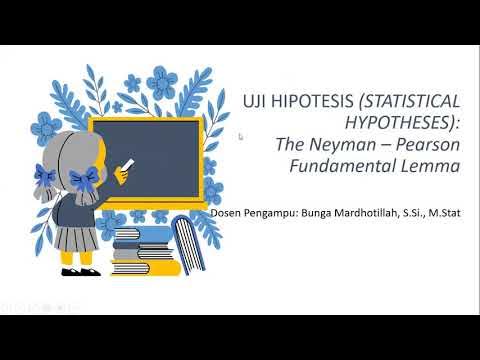Type I error vs Type II error
Summary
TLDRThis lesson explores the concepts of Type I and Type II errors in hypothesis testing, using relatable examples to illustrate their implications. A Type I error occurs when a true null hypothesis is wrongly rejected, often seen as more serious, while a Type II error involves accepting a false null hypothesis, considered less critical. The importance of sample size and variance in influencing these errors is discussed, alongside the concept of 'power' in hypothesis testing. Engaging scenarios, like navigating romantic interests, make the statistical principles accessible and memorable.
Takeaways
- 😀 Type I error occurs when a true null hypothesis is rejected, leading to a false positive.
- 😀 Type II error happens when a false null hypothesis is accepted, resulting in a false negative.
- 😀 The probability of a Type I error is represented by alpha (α), which is set by the researcher.
- 😀 The probability of a Type II error is denoted by beta (β) and is influenced by sample size and population variance.
- 😀 Type I error is considered more serious because it can result in missed opportunities.
- 😀 In hypothesis testing, the power of the test is defined as 1 minus beta (1 - β), which is the goal of researchers.
- 😀 Increasing the sample size generally enhances the power of the test and reduces the likelihood of Type II errors.
- 😀 Real-life examples help illustrate these concepts, such as romantic situations involving love interests.
- 😀 Recognizing the potential for both types of errors is crucial for effective statistical analysis.
- 😀 While statistics is a valuable tool, it is important to remember that it is not perfect and errors can occur.
Q & A
What are the two types of errors in hypothesis testing?
-The two types of errors are Type I error and Type II error.
What is a Type I error?
-A Type I error occurs when you reject a true null hypothesis, also known as a 'false positive'.
What is the probability of making a Type I error called?
-The probability of making a Type I error is called alpha, which is the level of significance chosen by the researcher.
What is a Type II error?
-A Type II error occurs when you accept a false null hypothesis.
What does beta represent in hypothesis testing?
-Beta represents the probability of making a Type II error.
How can researchers increase the power of a test?
-Researchers can increase the power of a test by increasing the sample size.
What is the power of a test?
-The power of a test is the probability of rejecting a false null hypothesis, which is equal to 1 minus beta.
In the love analogy, what does the null hypothesis represent?
-In the love analogy, the null hypothesis represents the belief that the girl likes you back.
What is the consequence of making a Type I error in the love analogy?
-Making a Type I error means not inviting the girl out when she actually likes you, resulting in a lost opportunity.
What happens in a Type II error in the love analogy?
-In a Type II error, you invite the girl out believing she likes you, but she actually doesn't, leading to an awkward situation.
Outlines

This section is available to paid users only. Please upgrade to access this part.
Upgrade NowMindmap

This section is available to paid users only. Please upgrade to access this part.
Upgrade NowKeywords

This section is available to paid users only. Please upgrade to access this part.
Upgrade NowHighlights

This section is available to paid users only. Please upgrade to access this part.
Upgrade NowTranscripts

This section is available to paid users only. Please upgrade to access this part.
Upgrade Now5.0 / 5 (0 votes)





